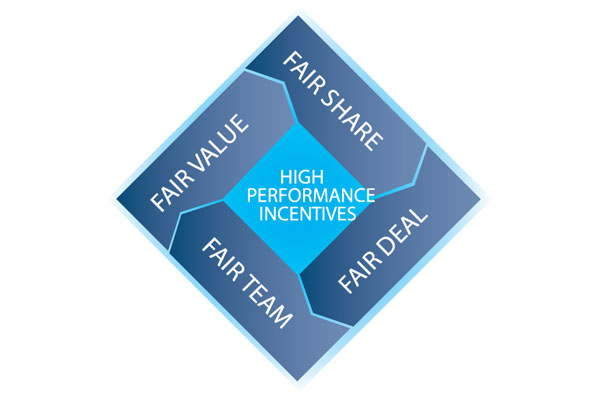Profits Interest and Why We Need it
Founders who still own and run their businesses may bring on executives to get to the next level and/or to free themselves from being a slave to their success. The challenge is how to provide incoming executives with attractive upside at low cost, risk, and complexity to the owner, founder.
Profits Interests, an ownership and incentive planning solution under current US tax law, are often the right and best approach. This powerful equity incentive plan requires no buy-in; is not taxable at grant or vesting; and, its capital liquidations are taxed as capital gains.
To borrow a concept from architectural engineering, the profits interest is a “cantilevered” approach to equity transfer a la Frank Lloyd Wright. Essentially, profits interests extend a stake in the economic future of a company to key executives without requiring payment for the underlying capital interest foundation.
Advantages
Profits interest offer many design advantages, since:
- Profits interests are accretive: The value of a profits interest accrues from the future success of the business with no value at grant. Hence, owners and founders can be assured that they are only giving away a portion of the upside growth of their companies.
- Profits interests are taxed as capital gains: When designed properly, the recipient pays no tax at grant and no tax at vesting. Recipient pays capital gains taxes upon liquidation. In these regards, the profits interest is a truly unique tax vehicle in the realm of long term incentives.
- Profits interests are flexible: All profits interests are composed of two parts: an annual profit allocation and a liquidation value upon certain triggering events. Based on design, different and creative combination can be a powerful yet flexible tool.
- Profits interests also provide high performance incentives as they share in the success of future achievement. They facilitate leadership and owner succession via equity transfer. And they strengthen high-performance cultures by promoting equity and fairness, helping to attract and retain the right key employees.
Qualifications and Costs
- To qualify for the tax and design benefits profits interests, the grants must pertain to a privately- held partnership or an LLC taxed as a partnership, a form of ownership that has exploded in popularity over the past 20 years. Several other qualifications must be met as well.
- Given certain costs and concerns, profits interests are not for all companies or situations. Profits interests are issued without any cost to the executive so there is less “skin in the game”. The variety of profits interest design options and choices for can create complexity.
- The set-up and maintenance costs of profits interests can be relatively high as compared with alternatives such as synthetic equity. The grants need to be drafted with consideration of changing tax laws. Still, many of these costs concerns can be mitigated by using an experienced advisory team.
Future prospects
We expect profits interests to become increasingly popular as many more middle market companies choose to be structured as an LLC taxed as a partnership. Designed properly, profits interests offer many advantages despite potential cost and other complexities.
Please contact us to learn more or click here to go directly to our Profits Interest article.















